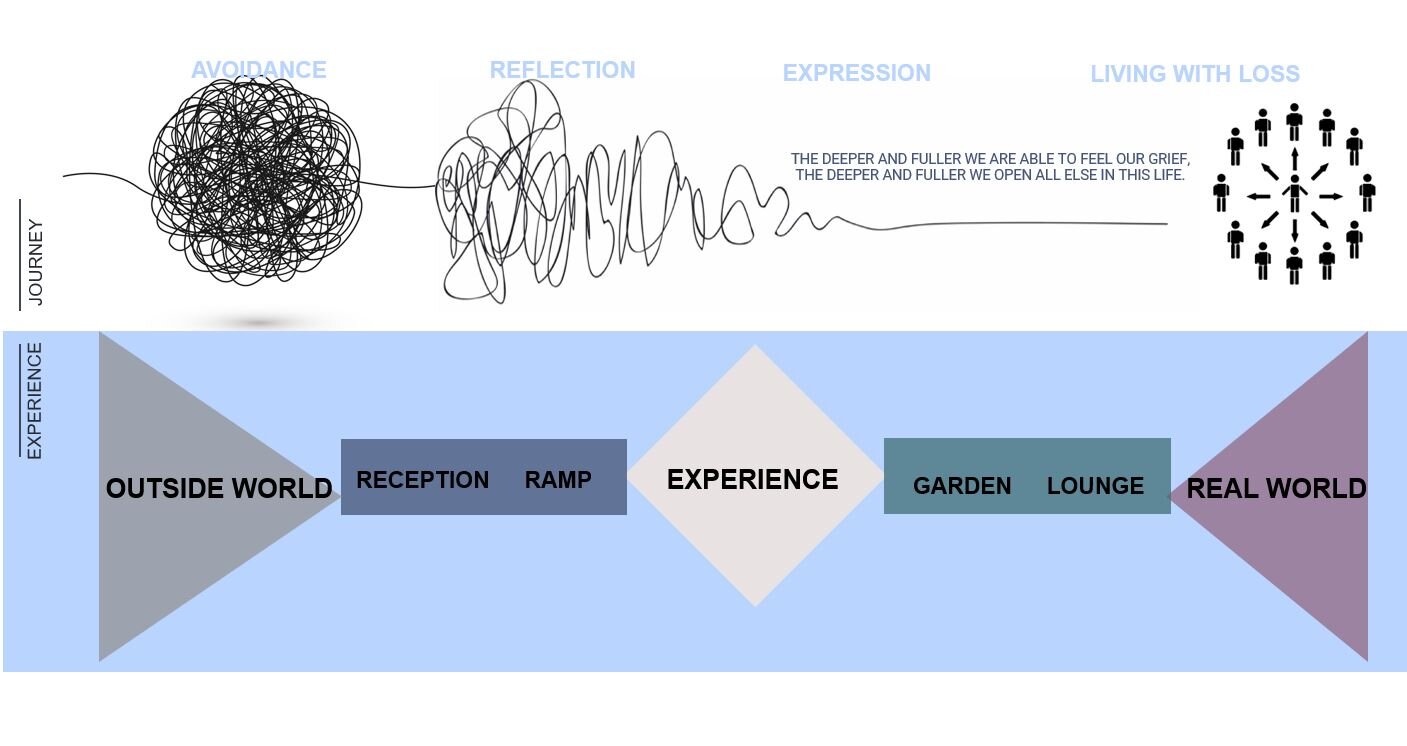
REIMAGINING THE END OF LIFE

DISCOVER
We interviewed 10 individuals ages 23 to 81, of various ethnicities and religious beliefs. We believed that end of life conversation is not only for those advanced in age.
SYNTHESIZE
One of our interviewees, gave us her first-hand account of witnessing the decline and death of her grandfather. We plotted her narrative and discovered that there are two sides of the same story that ran in parallel: that of the dying and his/her family. End of life is a shared experience that affects the dying just as much as the family and loved ones.
We narrowed down to the topic of grappling with grief.

PROBLEM
Navigating grief is complicated.
Grief isn’t what we thought it was. It is not a linear, 5-step process, or a set of tasks you complete to “get over it”. It is a tangled set of emotions and navigating it all can seem impossible.
Insights
People avoid thinking about grief
“We had to unpack his boxes. I just avoided it.”
CLAIRE M | 23
Experiencing death and grief is as individual as life
“For the first few years, I felt so guilty for feeling relief.”
YVETTE Y | 47
People need space to grieve
“I didn’t know where to go and who to turn to.”
MARY L | 30
How might we be a conduit to facilitate and process grief?
IDEATE
We brain stormed 40 ideas that might help others express grief. We eventually picked “Feelings Room”, grief immersive theme room series where people experience grief, anger, sorrow and acceptance brought about by the death of a loved one. This became the blue print for our final design.
TEST
We simulated various elements of our curated experience (the Space, the App, the community events) through interactive activities to test the following hypothesis:
Hypothesis 1: A physical space is conducive to facilitating the processing of grief.
Hypothesis 2: Mobile app aids in reflection and introspection.
Hypothesis 3: Events and workshops hosted in the space add value to the experience.
Learnings
Not just a space but a holistic experience is needed to put people in the mindset of grieving.
“What if I’m not in that space of thinking about the dead person? You need to put people in that headspace of reflection.”
EDRIC C | 24
Impact: We need to ease transition of abruptness of going immediately into the space. They also need space to decompress after the experience.
Visitors may not have a clear idea of why they’re visiting or what they’re feeling
“I can’t pinpoint one specific reason, it’s a combination.”
ADITI K | 26
Impact: We need to facilitate this multitude of emotion and intent through the experience. Strike the right balance of guidance, and how each experience is customized for each individual.
Preference for events vary
“Free events reduces the quality of the experience”
MARY L | 30
Impact: We need a clear division of the dual utilization of the space: for individual reflection and for communal events during after hours.

SOLUTION
Curating an immersive experience that mirrors the journey of grief, in the form of a space that puts people in the headspace of thinking about and processing grief.
Based on our findings, we fine-tuned our idea into a customized immersive experience that allows people to unravel their grief, acknowledge, and process their feelings through reflection and expression.
Design Principles
Break down barriers, resistance and fear around this topic by acknowledging it.
Build an empowering space for people to express and allow positive and negative emotions to settle.
Be a conduit for people to have this conversation openly and authentically.

The Grief Collective
An immersive experience.

















